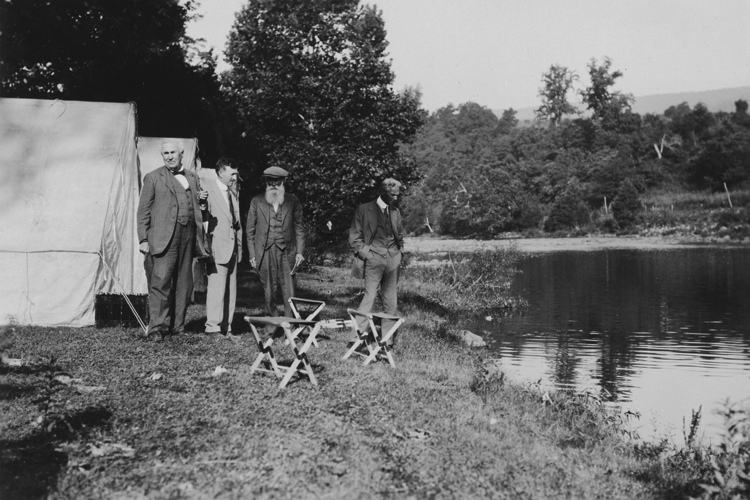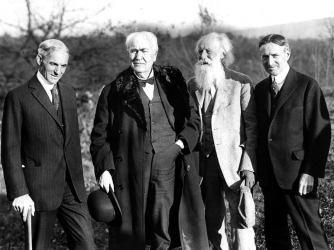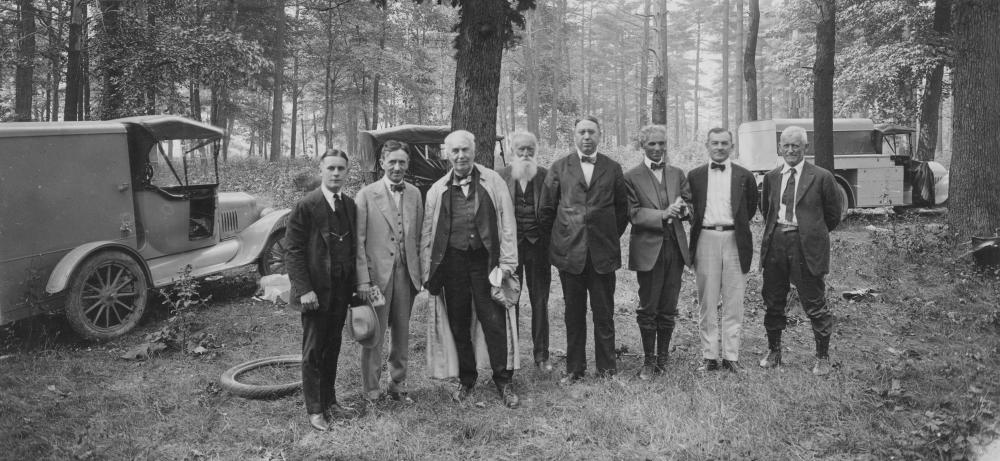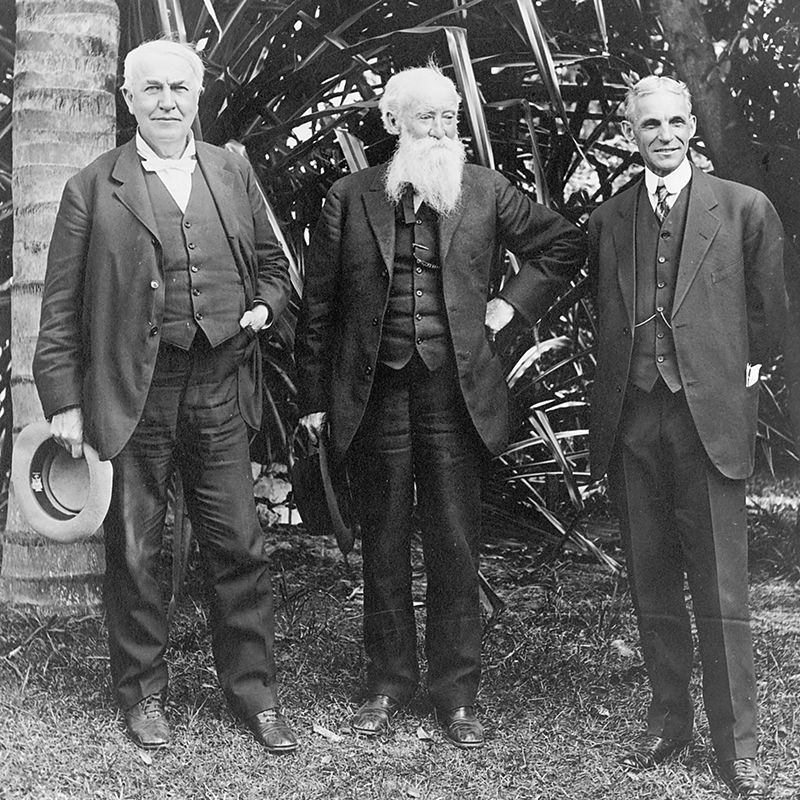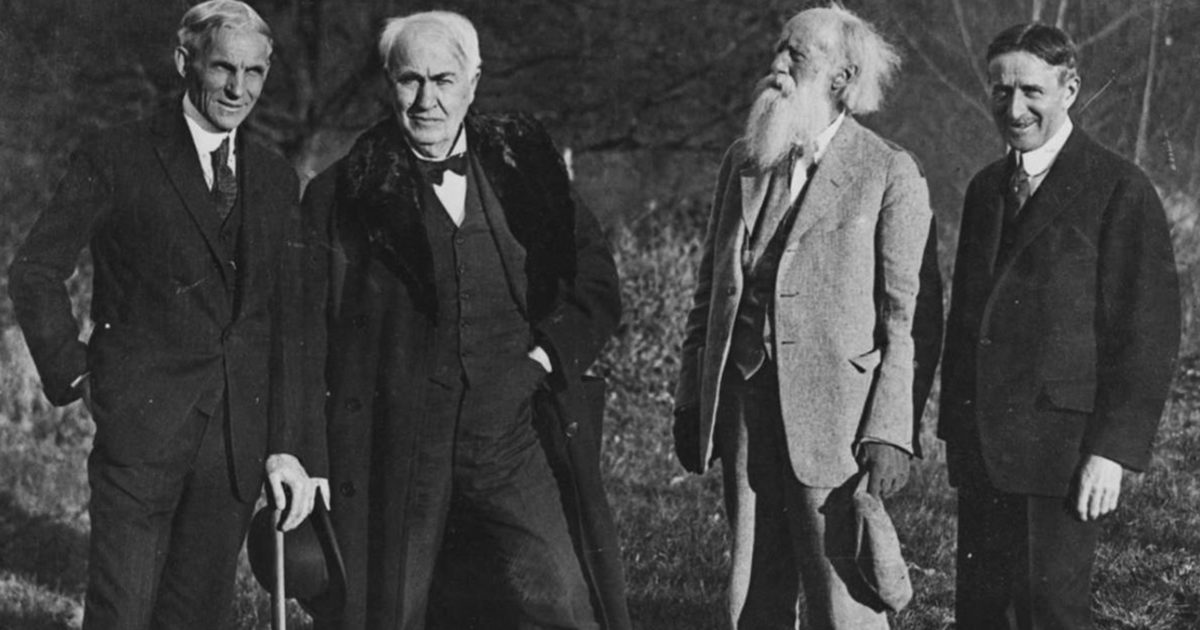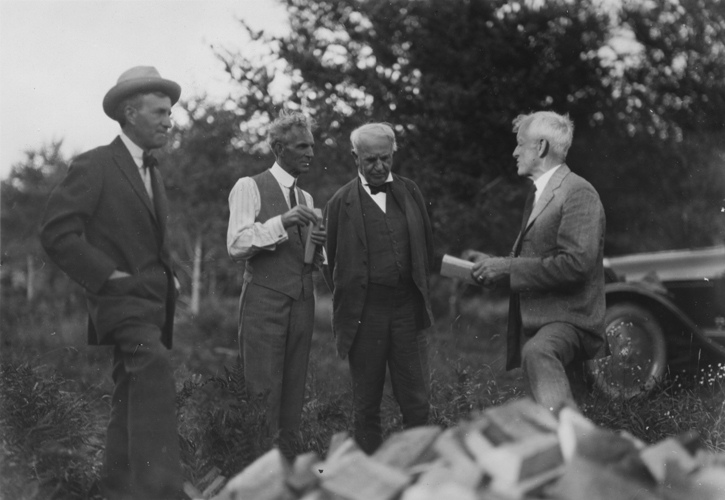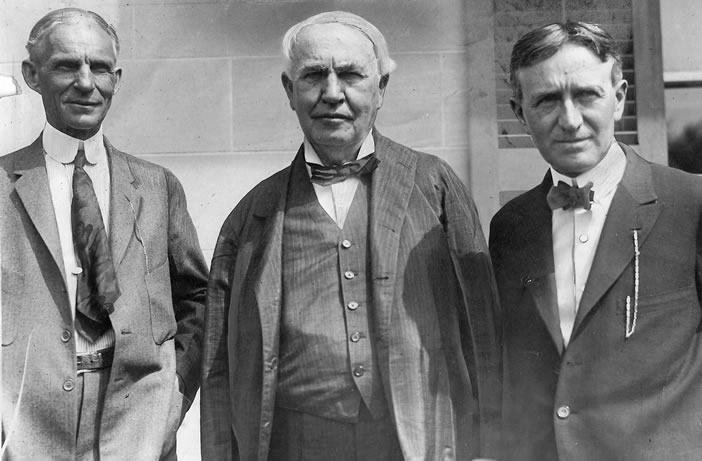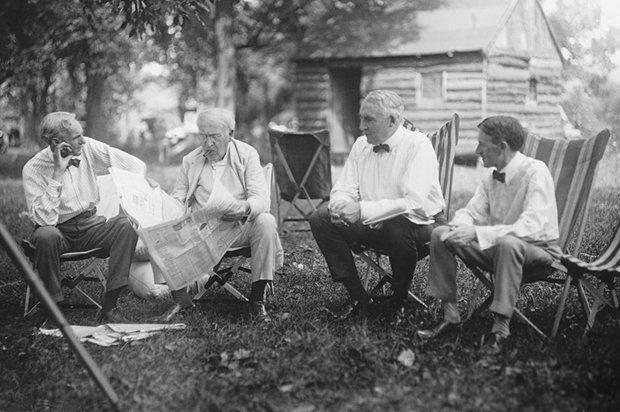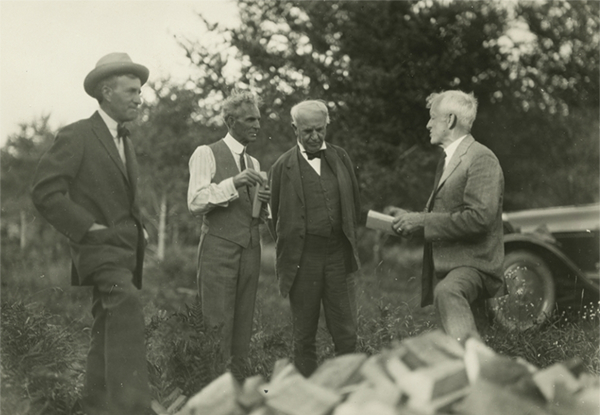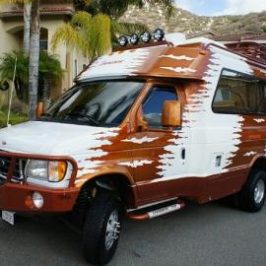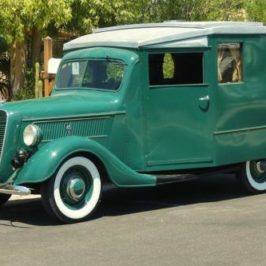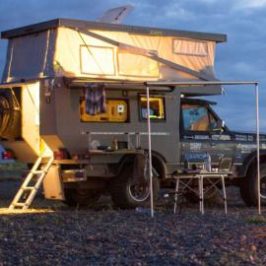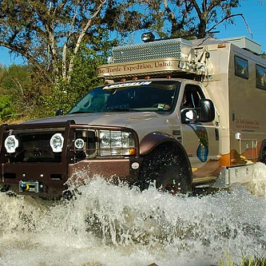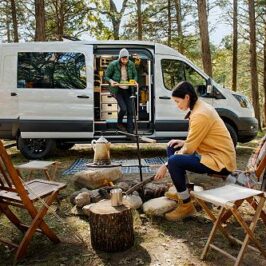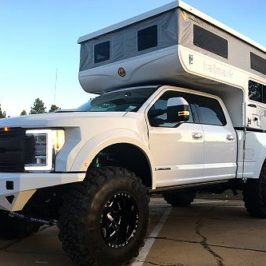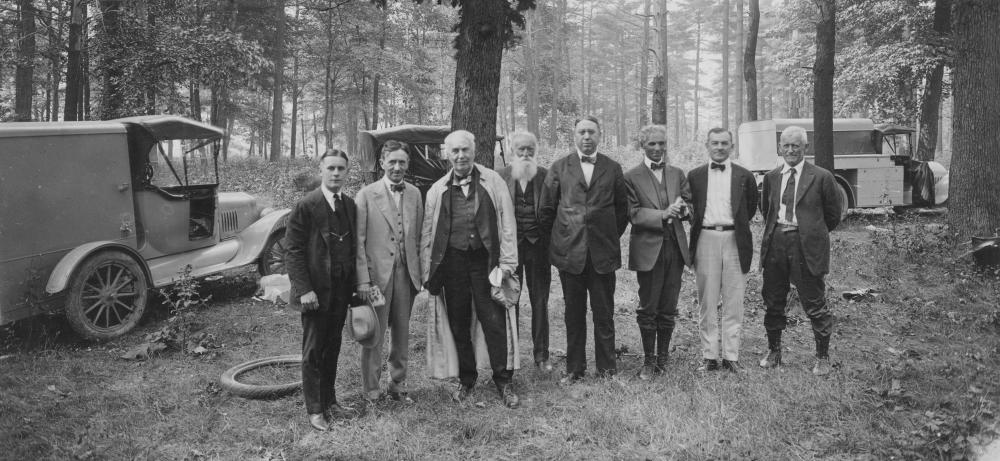
Adventure travel has become extremely popular over the past few years. These back country adventures have also been referred to as overlanding.
In 2019, Ford will try to market the new Ford Ranger to adventure seekers, but this isn’t a new concept. Adventure travel dates back to 1915, when Henry Ford began embarking on his own adventures. If Henry was still leading Ford today, you’d likely see some pretty serious adventure vehicles coming off of the Ford assembly line.
In 1914 Thomas Edison, Henry Ford, John Burroughs, and assorted family members assembled their Ford motor cars and embarked on a camping and exploratory trip of the Florida Everglades. It would begin a decade of exploration of America by the self-proclaimed ‘Vagabonds’ and the beginning of an unprecedented era of recreational travel that would transform America.
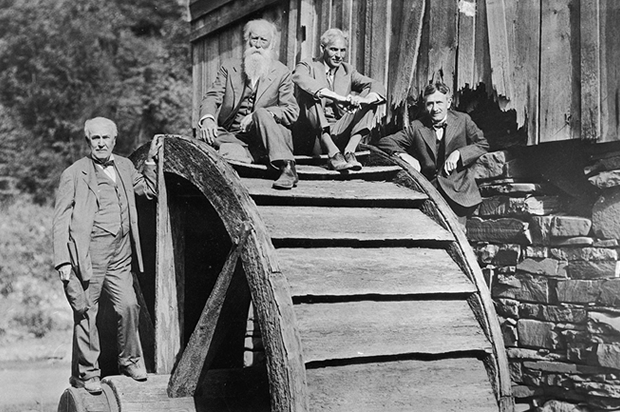
Thomas Edison, John Burroughs, Henry Ford, and Harvey Firestone
Edison, Ford, and Burroughs with family and friends on a camping trip in the Florida Everglades.
Edison had purchased riverside property in Fort Myers in 1885 and created a tropical retreat for himself, his family, friends and professional colleagues. By 1914 he was ready to explore Florida and to engage his colleague Henry Ford with his automobiles in the project.
In the winter of 1914, the respected American Naturalist, John Burroughs, and automobile magnate Ford arrived in Fort Myers to much fanfare and excitement to visit Edison. At the time Burroughs, the author of dozens of nature essay collections, enjoyed immense national popularity. Ford was at the height of his fame, having produced his self-coined “motor car for the multitude,” and instituted the previously unheard of – five dollar per day pay rate and eight hour workday.
Burroughs marveled at the exotic subtropical plants and birds of the Caloosahatchee River region, noting how much the area reminded him of Honolulu and Jamaica. Ford always looked forward to spending time away from his busy industry with his mentor and hero, Thomas Edison. Although we don’t know exactly how the idea for their first camping journey into Florida’s wild country came about, it seems likely that Edison saw the trip as an adventure and opportunity to share his beloved Eden with his friends.
However the idea materialized, the three famous men journeyed into the Everglades and investigated the flora and fauna of the Big Cypress area. Roughing it off-road in the Florida interior gave the men a taste for discovery. As a result, they, along with tire industrialist Harvey Firestone, embarked on a series of camping trips through the eastern United States.
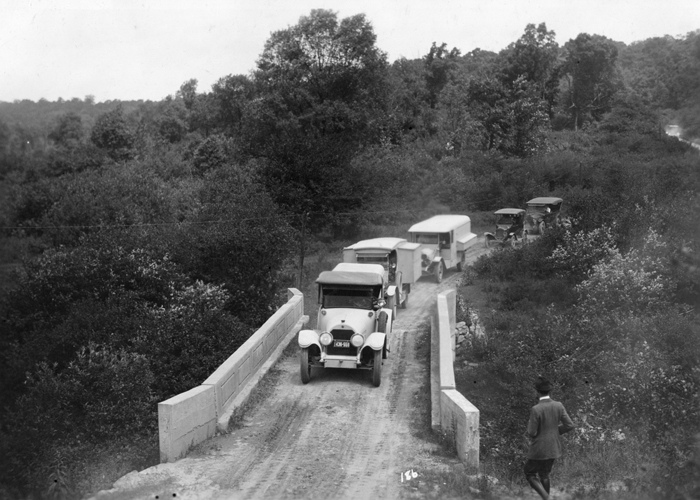
For the next ten years, the “Vagabonds” and their guests explored America their way. They experienced the growing nation and its resources, as well as the interests of the American public, first-hand. They also engaged in tree chopping contests, entertained curious onlookers, motored off-road, and enjoyed time away from their busy lives. Yet the camping trips merit a deeper significance when observed against the backdrop of a period of tremendous political, technological, and industrial change.
According to Harvey Firestone’s reminiscences, each of the famous campers had a pre-described role in the trips. Edison arranged a storage battery set-up to light the camps and provide electricity. He also led late-night fireside discussions about politics, philosophy, and current events that became the hallmark of the trips. Firestone made sure the vehicles were loaded with provisions and hired the cooks.
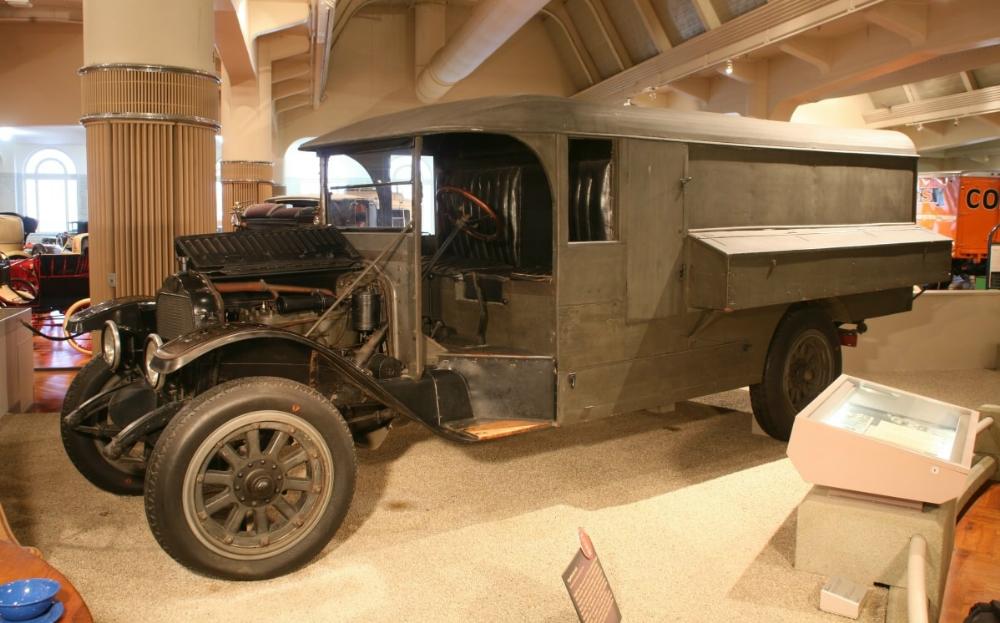
The Vagabonds — Henry Ford, Thomas Edison and Harvey Firestone — enjoyed their annual camping trips taken from 1916 to 1924. While the three men delighted in the outdoors, their accommodations weren’t particularly rustic. This 1921 White truck traveled with them, carrying elaborate tents and camping equipment that provided many of the comforts of a good hotel.
Ford scouted out potential camping areas, often taking a swim in nearby waters, climbing trees, chopping wood with gusto, organizing contests for entertainment (rifle shooting, high kicking, and sprinting) as well as the role of caravan mechanic. Ford had two Model T trucks outfitted with drinking water tanks and work tables for the cooks. (One of these trucks is on display in the Edison & Ford Winter Estates Museum Exhibit “Into the Wild”).
Burroughs was the philosopher and nature-lover on the trips. A good deal older than the other campers, he enjoyed the role of instructor, taught bird calls, shared his knowledge of botany, and led nature walks.
Over the decade in which the trips took place, they evolved from relaxing getaways to heavily promoted events that included numerous publicity stops covered by the press and the Ford Motor Company’s newsreel cameras. Historians often note that Edison’s greatest invention did not garner one of his famous 1093 patents; it was his propensity for self-promotion that may have been his utmost genius.
Similarly, Ford capitalized on his image as an “everyman” by using the camping trips as a means to promote the joys of recreational motoring, in turn, selling more Model Ts. It is no coincidence that tin-can tourism became the national rage at the same time that the “Vagabonds” highly-publicized camping trips took place.
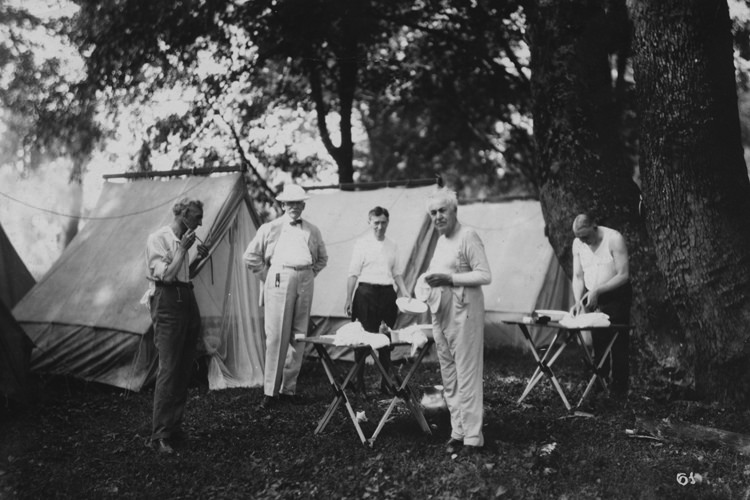
Hunting was a popular pasttime on these camping adventures. Pictured here, is Henry Ford with a pheasant.
The fact that two sitting United States Presidents, Warren Harding and Calvin Coolidge made appearances during the camping trips, illustrating the influence that Edison, Ford, and Firestone wielded not just in business, but in politics.
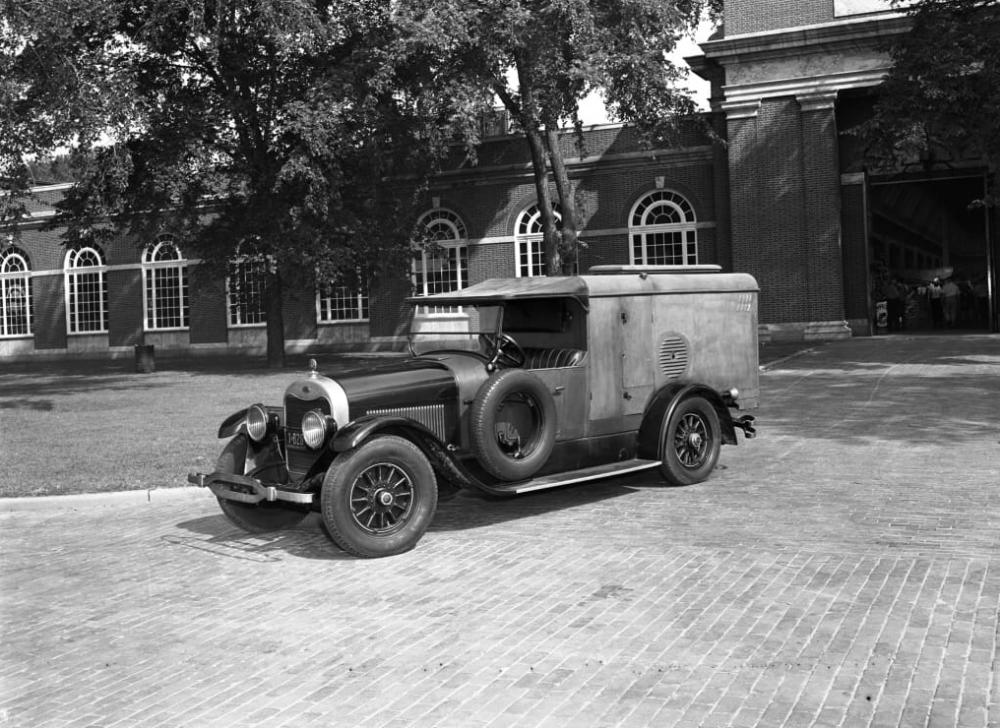
The Vagabonds — Henry Ford, Thomas Edison and Harvey Firestone — enjoyed their annual camping trips taken from 1916 to 1924. While the three men delighted in the outdoors, their accommodations weren’t particularly rustic. This truck, built on a 1922 Lincoln chassis, traveled with them, carrying food and cooking utensils for elaborate meals that might include steak, chicken or freshly baked pie.
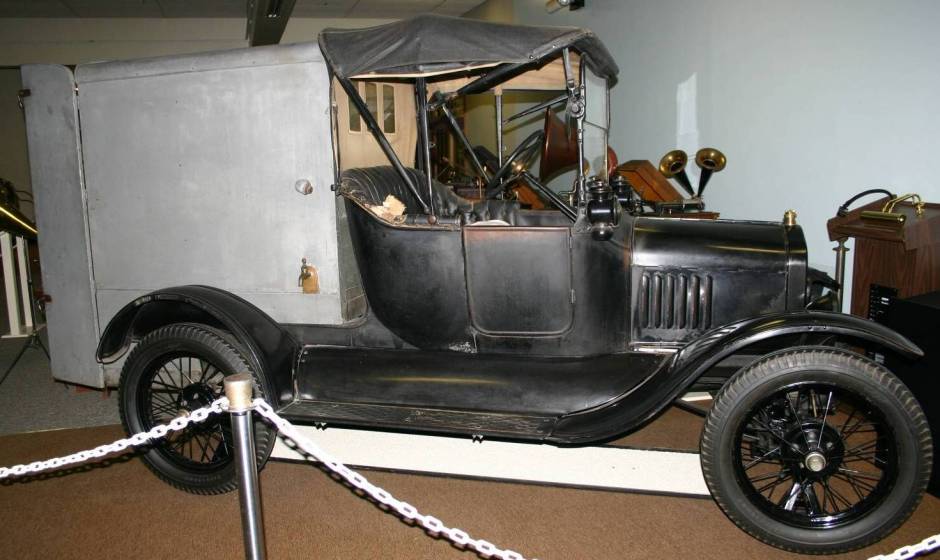
Henry Ford had this 1918 Ford Model T roadster specially outfitted for the camping trips he enjoyed with friends Thomas Edison, Harvey Firestone, and John Burroughs.
The aluminum-covered pine box allowed for storage of camping supplies and contains three large drawers with dividers made of Model T floorboards and a slide-out table. An open storage area is located below the table. An outside water faucet and filler tap are located on the right side of the box. The two water containers located inside are converted Model T gas tanks.
Around 1926, the original wooden wheels were replaced with wire wheels, which are believed to be prototypes of the standard wire wheels introduced on all Ford cars that year. At about the same time, an updated engine reduced overheating on the rough roads the campers would have encountered.
Ford Invents Charcoal:
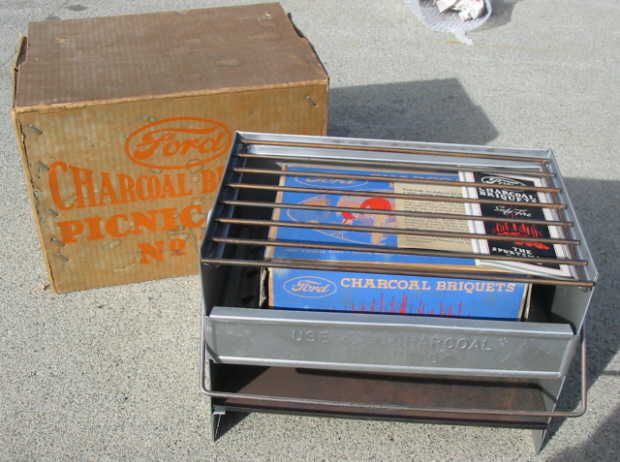
The next time your camping out, or just grilling and using charcoal, you may be interested to know that Charcoal was a creation of Ford’s.
Over the years these Vagabond trips grew, and various people were invited to join them. One such lucky individual was Henry Ford’s cousin’s husband, Edward G. Kingsford.
Ford was building more and more Model T’s, and wanted to begin supplying all the wood he needed on his own. As each Model T used over 100ft of wood—wheels, frames, seats, many parts—Henry Ford would need a lot of trees, and the means to harvest them.
E.G. Kingsford stepped up to the plate for his new cousin, as he was fortuitously a real estate agent. Brokering the purchase of over 313,000 acres of lumber in Michigan’s northern peninsula, Kingsford continued to be of use in developing the land. Building sawmills for the lumber solved one problem, yet Ford needed workers to staff his new mills, and so he tasked Kingsford with the building of a small town, aptly named Kingsford, Michigan.
E.G. Kingsford had helped Henry Ford in meeting his own demand for lumber, and yet Ford was still not pleased. Looking to save costs anyway he could, he had built a new parts and body factory at the location of the sawmill, to reduce transportation costs. While effective, Ford found that these new factories had a few unavoidable wastes, such as wood chippings, trimmings, and shavings.
When parts and cars are built in the millions, apparently these trimmings add up to a noticeable amount: at least to Henry Ford. By 1922, the Ford Motor Company calculated that the lost value of this wood was around $11,000 a day; allegedly the bean-counters even took the sawdust from the mills into account.
While the accountants were finding out the value of the waste, Henry Ford had tasked a chemist by the name of Orin Stafford to come up with a means to salvage the waste and turn it into a measurable value. Stafford achieved this by turning mill waste—such as sawdust and chippings—into small lumps of dark fuel: the charcoal briquette. Achieved by mixing wood products with tar and cornstarch, Ford realized that he could market the product, and began preparations for a new plant to be built in Kingsford.
Fellow Vagabond Thomas Edison lent a hand to his old pal Ford, and helped in designing the plant which was to be placed next to the sawmill and parts factory. Titled the Carbonization Building, this plant began construction in 1922, with operation beginning in 1924. Able to process all of the day’s waste, the Carbonization plant broke down waste wood into usable components through refinement and distillation. For every ton of scrap that entered the building, Ford could eke out 135 pounds of acetate lime, 61 gallons of wood alcohol, 15 gallons of tar and other various oils, 600 cubic feet of fuel gas—used to power the surrounding plants—and finally 610 pounds of charcoal.
While Ford could use many of the by-products of this process, he could not use all the charcoal that he was producing. Sure enough, Ol’ Henry Ford couldn’t let anything go to waste, and soon enough Ford dealers across the nation were selling charcoal-powered grills, and the briquets—Ford shortened the word for ease of use—to fuel them.
Video:
More Photos:
Click the photos to enlarge – click the arrows to load more.

